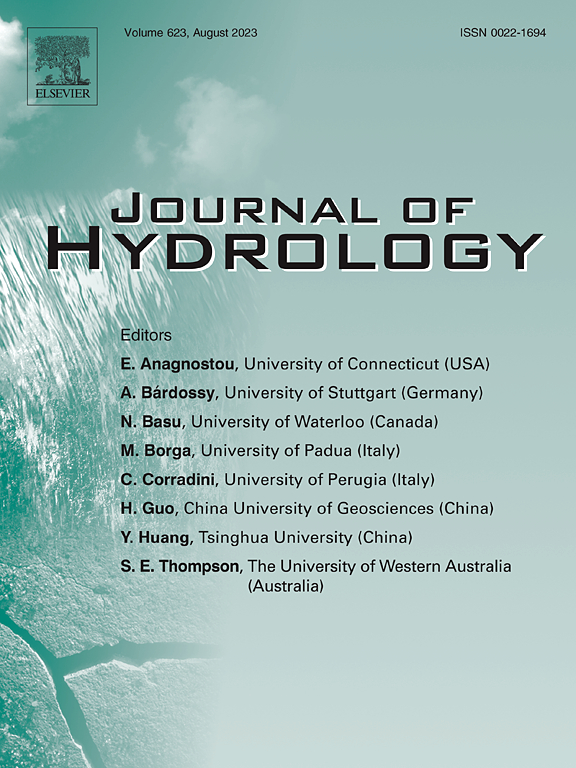Limited carbon sequestration potential despite enhanced productivity in groundwater-influenced hyper-arid ecosystems
IF 5.9
1区 地球科学
Q1 ENGINEERING, CIVIL
引用次数: 0
Abstract
Groundwater level (GWL) fluctuations significantly affect carbon cycling in hyper-arid ecosystems. However, the impacts of GWL fluctuations on carbon cycling in the lower Tarim River and the mechanisms driving these changes are poorly understood. Accordingly, the effects of GWL changes on the net primary productivity (NPP) and net ecosystem productivity (NEP) in the riparian corridor of the lower Tarim River were investigated in this study using an improved Carnegie–Ames–Stanford Approach model. An increase in GWL resulting from ecological water transfer was found to enhance both the NPP and NEP. However, the riparian corridor remained a net carbon source as the maximum carbon sink area accounted for only 30.8 % of the study region. The analysis results also revealed a nonlinear and threshold-based relationship between the GWL and carbon cycling, in which the NPP and NEP were significantly inhibited when the GWL dropped below –4.84 m and –4.44 m, respectively. Finally, convergent cross mapping revealed that the GWL had a greater causal effect on the NPP than on the NEP. These findings provide a robust scientific basis for optimising ecosystem management strategies to enhance carbon sequestration in hyper-arid regions.

在受地下水影响的超干旱生态系统中,尽管生产力提高,但固碳潜力有限
地下水位波动对超干旱生态系统碳循环有显著影响。然而,全球海平面变化对塔里木河下游地区碳循环的影响及其驱动机制尚不清楚。基于此,本文采用改进的Carnegie-Ames-Stanford方法研究了GWL变化对塔里木河下游河岸廊道净初级生产力(NPP)和净生态系统生产力(NEP)的影响。生态调水导致的GWL增加对NPP和NEP均有促进作用。然而,滨水廊道仍是净碳源,最大碳汇面积仅占研究区域的30.8%。GWL与碳循环之间存在非线性的阈值关系,当GWL分别低于-4.84 m和-4.44 m时,NPP和NEP显著受到抑制。最后,收敛交叉映射显示,GWL对NPP的因果影响大于对NEP的因果影响。这些发现为优化生态系统管理策略以增强超干旱区的碳固存提供了有力的科学依据。
本文章由计算机程序翻译,如有差异,请以英文原文为准。
求助全文
约1分钟内获得全文
求助全文
来源期刊

Journal of Hydrology
地学-地球科学综合
CiteScore
11.00
自引率
12.50%
发文量
1309
审稿时长
7.5 months
期刊介绍:
The Journal of Hydrology publishes original research papers and comprehensive reviews in all the subfields of the hydrological sciences including water based management and policy issues that impact on economics and society. These comprise, but are not limited to the physical, chemical, biogeochemical, stochastic and systems aspects of surface and groundwater hydrology, hydrometeorology and hydrogeology. Relevant topics incorporating the insights and methodologies of disciplines such as climatology, water resource systems, hydraulics, agrohydrology, geomorphology, soil science, instrumentation and remote sensing, civil and environmental engineering are included. Social science perspectives on hydrological problems such as resource and ecological economics, environmental sociology, psychology and behavioural science, management and policy analysis are also invited. Multi-and interdisciplinary analyses of hydrological problems are within scope. The science published in the Journal of Hydrology is relevant to catchment scales rather than exclusively to a local scale or site.
 求助内容:
求助内容: 应助结果提醒方式:
应助结果提醒方式:


